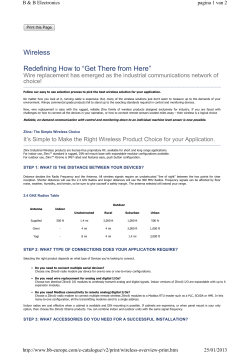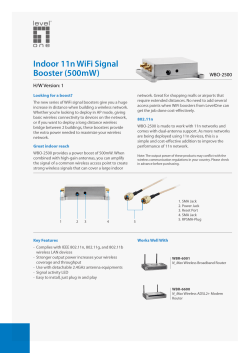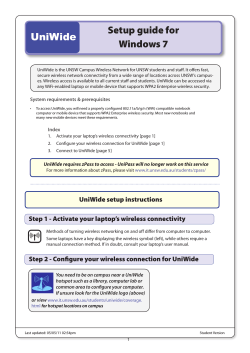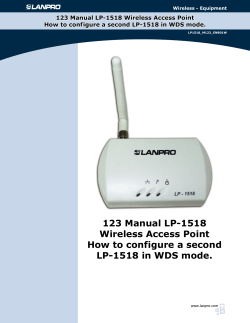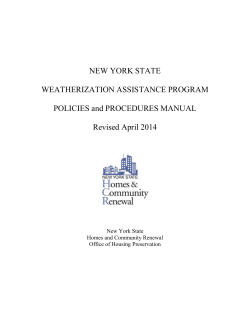
Mobile Internet and Wireless Applications WAP.FILMLISTEN.NO Thorbjørn Rusnes
MICROELECTRONIC ENGINEERING RESEARCH CONFERENCE 2001 Mobile Internet and Wireless Applications WAP.FILMLISTEN.NO Thorbjørn Rusnes Abstract – In this project we have used an online web site, and converted it into a site to use on wireless equipment. The focus has been on the current standard, and ways to use this technology today. This work ends up with a working model of a web site for WAP ready for release. Some of the limitations and problems with current version are addressed. Today there are two major competitors in the wireless Internet race, WAP and iMODE. This work has a major focus on WAP, but is not locked to it. I. INTRODUCTION OBILE INTERNET is just in its start phase and already there are lots of expectations among the public on how its behaviour and use should be. The situation for the user is a huge amount of different equipment with different support of the technology. Users expect to find the same kind of functions in a wireless device as they do in their home computer. At the same time there is still three different versions of mobile Internet, WAP [1], iMODE [2] and HDML [3]. Where WAP and iMODE are the two versions most successful, WAP amongst the providers and iMODE has most users. All technologies are today depended on a gateway to do the translation of the request and the response. This minimizes the amount of data sent on the slow wireless link. M Client Gateway Encoded Request WAE User agent Origin Server Request Encoders and Decoders Encoded Response Response CGI Scripts etc Content There has been a lot of research on use and implementation of different wireless technologies, but not on the actual use- and making of applications for it, and the interaction between the wireless equipment and the content server. WAP applications need to be specially designed for the mobile equipment and its limitations like limited memory, CPU capacity, a small screen and sometimes few keys, all with the lack of equipment descriptions variables. At the same time it is important not to lock the server side code to a specific type, but to design it so it easily can adopt new changes and technologies. In this research is an application was developed for a Norwegian online entertainment site [4] that uses most traditional online technology. Database interaction, text and graphics presentation and user authentication is tested. The research started was based on a request form a Norwegian company to develop a WAP version of their current web site, where most of their functions where available. The server side code had to be as general as possible for this database, so that new technologies easily could be added. In an entertainment environment the majority of information is based around pictures and multimedia content. The current version of WAP [1] only supports simple graphics and text. There is also a lot of text that can be displayed if equipment supports it. II. IMPLEMENTATION This research focused on the actual implementation of the application and how it would work on wireless equipment. Issues on converting an online site to a wireless application was discussed and addressed accordingly. One of the biggest challenges in wireless application is to design and adjust the output so that it will suit the used equipment. Screen size and memory capacity is the most important factors to consider, and with so many different types of equipment with few variables telling the system how to react. Even tough the WAP specification has included a user agent type description specification in WAP1.1, it is still only a recommendation and very few use it. Still some variables can be used given they only are set to control whether to allow the minimum requirements or not. A compromised solution was used to cope with most cases in today’s equipment. The solution was based on using multiple variables, some for acceptance and other for exception handling. When making an application for this kind of equipment it is important to open for the use of different mark-up languages. Therefore a way of integrating any mark-up language into this wireless application is proposed. This means keeping all the mark-up code in the template files and leave the program scripts for gathering information from the database. A set of special tags is used for controlling the server side scripts to produce the correct output. One tag type where based on the comment MICROELECTRONIC ENGINEERING RESEARCH CONFERENCE 1999 tag, <!--name--><!--/name--> and allows the designer to group code that are identical and dependent of the numbers of output lines from the database. This tag needs a start and stop tag! The other tag type is a custom made one and follows the syntax, <%tagname%>. This tag tells the system what kind of information to replace the tag with. All possible tags are to be found in the user guide on how to use the system. In many online applications today, there is a request for authentication. There are different types of authentication available. The best one to use today is HTTP authentication, using a .htaccess file. This will deny access to particular directories on the server without correct username and password. This proved not to be a good solution for this project. There were too many variables in the database that controls the login to use http authentication. The alternative is an applicationcontrolled authentication, and is usually based upon cookies. It will give a more personal site and advertisements can also be more focused on the details about the authenticated user. A secure authentication requires some form of feedback from the client to identify it. This feedback is usually signed with a digest produced at login containing special information only valid for the current user. In today’s WAP version there are no support for cookies or local variables in the phone to store a key for digest generation. The idea is to store a special digest generated for the login session in the users equipment or cookie for proof of identity. The lack of cookie support forces the id to be stored in local memory of phone. This memory is unfortunately a global memory, and any site accessed after a login can read this variable and use it. On the bright side, this variable is deleted when a card uses newcontext=”true” or cache is cleared. Mobile phones from the same provider network proved to have the same IP-address, one reason being the limitation of IP-addresses in the current IP version. Mobile equipment is given an internal “illegal” Internet address, and external it uses the gateway address. Together with the lack of id numbers or subscriber number there are no good user id to identify the user or session. This id is very often used for MD5 generation of digest in login and authentication. Pictures are big part of today’s Internet, especially filmlisten’s news and articles. But presenting these pictures on a wireless device generates some new problems. The picture format used in web usually has to be converted and resized into wireless bitmap. We found the use if ImageMagick [7] to be really useful. Some experimenting of options to use gave good results. Even though most phones are said to support 100 pixels wide pictures, we found it necessary to reduce the picture size to 80 pixels wide. This reduces some of the details in some pictures but allows more equipment to accept them. III. CONCLUSIONS As a result of this research we have come up with one suggestion, implementation of wireless applications without locking the output code to one technology. There is no doubt that the current standard needs modification to meet the demands of the future. A closer integration with traditional web is an important part of this. A problem in development of wireless applications using WAP 1.1 is not all functions proposed in the standard is available in the user equipment. There are also too many differences in both the browser and the gateway that handles the compiling. The result is that the application has to use the basic functions only, the functions supported by every gateway and equipment used. It is important that wireless Internet has the same support for cookies as traditional browsers. Variables stored in phone should also be stored local to the domain, not global. Even though IP-addresses can be spoofed, it increases the security. Some of the problems and limitations in current WAP standard have been addressed and some proposed solutions are found in the new standard of WAP, WAP 2.0. The question is only, when will it all be available to the public? Most of all check out the result of this work on wap.filmlisten.no! IV. REFERENCES [1] www.wapforum.org WAP 1.x [2] www.nttdocomo.com iMODE [3] www.openwave.com HDML [4] www.filmlisten.no FilmListen [5] “The wireless application Protocol, Writing applications for the mobile Internet” by Sandeep Singhal, Thomas Bridgman, Lalitha Suryanarayana, Daniel Mauney, Jari Alvinen, David Bevis, Jim Chan and Stefan Hild. AddisonWeisley October 2000. [6] “www.z-y-g-o.com/wsec.html” Wireless security by Angus Wood [7] ”www.imagemagick.org” Image magick
© Copyright 2025

![[WCR-300S] How to Change the Wireless Network Name(SSID)](http://cdn1.abcdocz.com/store/data/000232989_1-c13ffbaf9a88e423608ef46454e68925-250x500.png)






